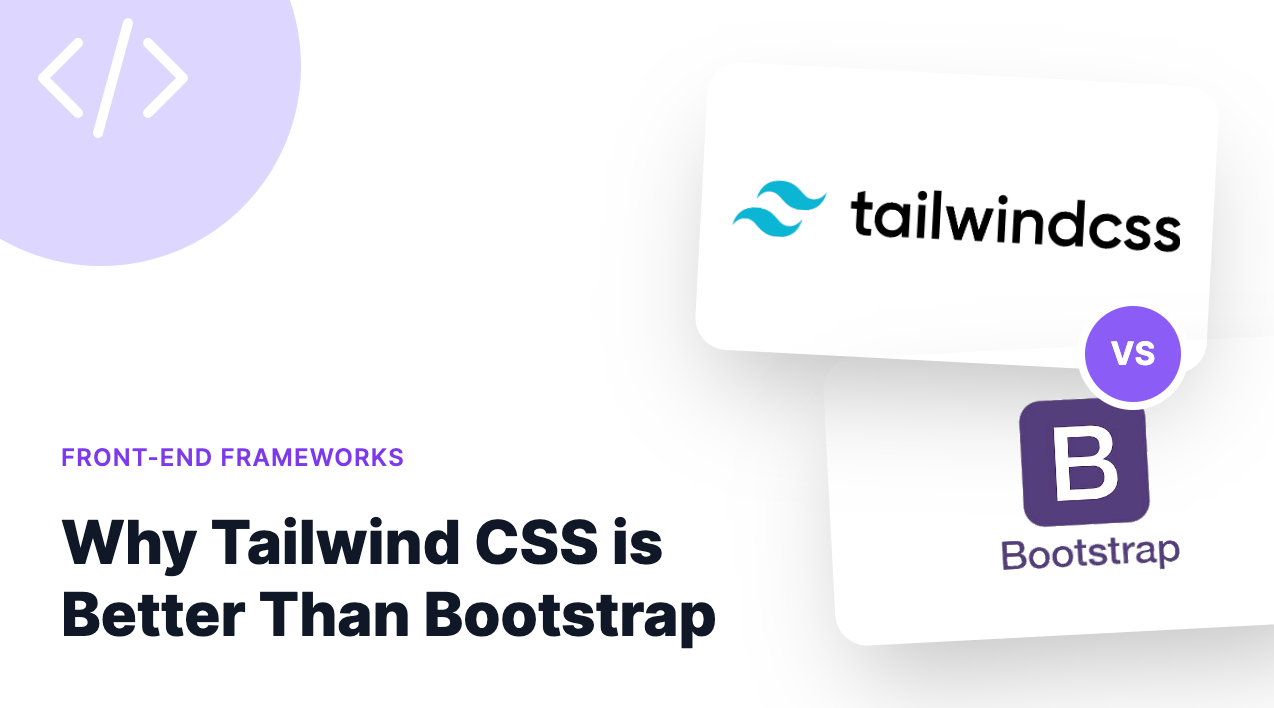
Why Tailwind CSS Is Better Than Bootstrap
In the ever-evolving world of web development, choosing the right CSS framework can significantly impact the efficiency and aesthetics of your projects. Two popular choices, Tailwind CSS and Bootstrap, have been widely debated among developers. In this article, we will explore why Tailwind CSS is often considered a superior choice over Bootstrap.
Introduction
Tailwind CSS and Bootstrap are both powerful front-end frameworks, but they have distinct characteristics that set them apart. Understanding these differences is essential for making an informed choice when developing web applications.
Understanding Tailwind CSS
Tailwind CSS is a utility-first CSS framework that emphasizes building user interfaces by composing simple utility classes. It offers a wide range of pre-defined classes that can be applied directly to HTML elements, making it incredibly efficient for designing responsive and customizable layouts.
Getting Acquainted with Bootstrap
Bootstrap, on the other hand, is a CSS framework that provides a set of predefined styles and components. It follows a more traditional approach, offering ready-made components such as buttons, navigation bars, and modals, which can be customized to suit your needs.
Flexibility and Customization
Tailwind CSS
Tailwind CSS shines when it comes to flexibility and customization. It allows developers to create unique designs by combining utility classes. This means you can style elements precisely the way you want without writing custom CSS code. Tailwind's utility-first approach empowers developers to be more creative and efficient.
Bootstrap
Bootstrap, while offering customization options, can be somewhat limiting in terms of design freedom. It provides a set of predefined components, and extensive customization may require overriding default styles or writing additional CSS, which can be time-consuming.
File Size and Performance
Tailwind CSS
One of the advantages of Tailwind CSS is its minimal file size. By only including the utility classes you need, you can keep your CSS files lightweight. This results in faster load times and better performance, especially on mobile devices with slower connections.
Bootstrap
Bootstrap, due to its comprehensive set of components and styles, tends to have a larger file size. While this may not be a significant concern for all projects, it can impact page load times, which is a critical factor in user experience.
Learning Curve
Tailwind CSS
Tailwind CSS has a relatively shallow learning curve, especially for developers familiar with HTML and CSS. Since it relies on utility classes, you don't need to memorize complex class names or component structures. This simplicity can lead to quicker development cycles.
Bootstrap
Bootstrap's learning curve can be steeper, as it requires understanding its predefined components and the classes associated with them. While its documentation is comprehensive, it may take more time for beginners to become proficient.
Community and Support
Both Tailwind CSS and Bootstrap have active communities and extensive documentation. However, the choice may come down to personal preference and specific project requirements.
Conclusion
In the battle of Tailwind CSS vs. Bootstrap, the winner depends on your project's needs and your development style. Tailwind CSS excels in flexibility and performance, making it a go-to choice for many developers. Bootstrap, with its ready-made components, can be an excellent choice for rapid development or when a specific design is needed.
In the end, the best framework for you is the one that aligns with your project goals and your familiarity with its features.
FAQs
- Is Tailwind CSS suitable for complex web applications?
- Yes, Tailwind CSS can be used for both simple websites and complex web applications. Its flexibility makes it adaptable to various project scales.
- Does Bootstrap offer a grid system like Tailwind CSS?
- Yes, Bootstrap provides a responsive grid system, similar to Tailwind CSS, for creating flexible layouts.
- Which framework is better for beginners?
- Tailwind CSS is often considered more beginner-friendly due to its straightforward utility-first approach.
- Can I use Tailwind CSS and Bootstrap together in a project?
- While it's technically possible, it's generally not recommended, as it can lead to conflicts and increased file sizes.
- Where can I find more resources to learn Tailwind CSS and Bootstrap?
- You can find extensive documentation, tutorials, and community support on the official websites of both frameworks.